When it comes to roof inspections, you have two main options: DIY or hiring a professional. Each approach has its own risks, costs, and benefits, so the choice depends on your needs, comfort level, and the condition of your roof. Here’s a quick breakdown:
- DIY Inspections: Cost-effective and convenient but come with safety risks and may miss hidden issues.
- Professional Inspections: More thorough and safer, using advanced tools to detect problems you might overlook, but they typically cost $200–$600.

Key Takeaways:
- DIY is ideal for quick checks and spotting visible damage after storms.
- Professionals are better for detailed assessments, especially after severe weather or for older roofs.
- Combining both methods can help you monitor your roof while ensuring long-term protection.
Quick Comparison:
| Feature | DIY Inspection | Professional Inspection |
|---|---|---|
| Cost | Free (your time) | $200–$600 |
| Safety | High risk | Safer with trained pros |
| Tools | Basic equipment | Advanced tools like drones and thermal cameras |
| Thoroughness | Limited | Detailed and in-depth |
| Insurance Documentation | Not valid | Accepted and credible |
Your roof is your home’s shield against harsh weather. Regular inspections – whether DIY or professional – can save you money and prevent major repairs. If you’re unsure about your roof’s condition, it’s always better to consult an expert.
When Should I Replace My Roof? Roof Inspection DIY
DIY Roof Inspections
Taking on a DIY roof inspection can help you save money and keep tabs on your roof’s condition. However, while it can be a practical part of your roof maintenance routine, it’s not without its challenges and risks. Understanding the process, tools, and potential pitfalls is crucial before climbing that ladder.
What Is a DIY Roof Inspection?
A DIY roof inspection involves checking your roof for visible signs of damage or wear using basic tools and safety gear. It typically starts with a visual assessment from the ground or a safe distance, followed by a closer inspection if needed. The aim is to spot issues early while keeping personal safety a top priority.
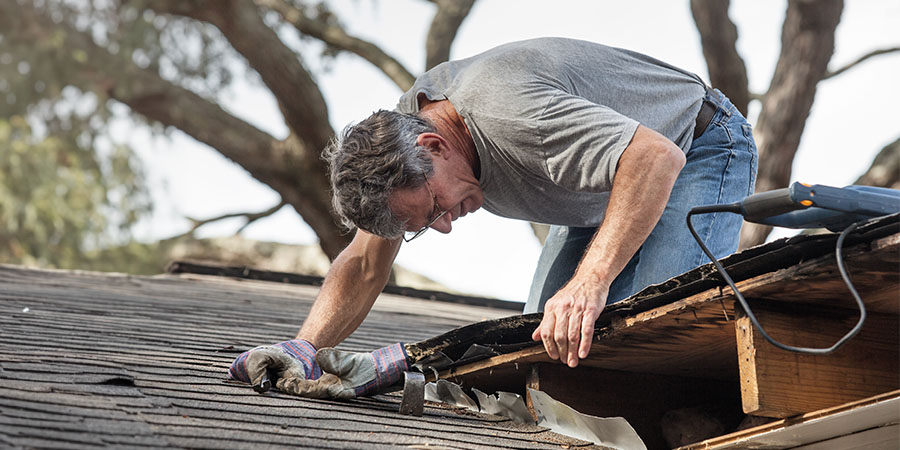
Tools and Safety Requirements
Having the right tools and safety gear is non-negotiable for a DIY roof inspection. Here’s what you’ll need:
- Safe Access Equipment: A sturdy ladder is essential. It should extend at least 3 feet beyond the roofline and rest on stable, even ground. For single-story homes, a standard extension ladder might do the job, but taller homes may require scaffolding for safer access.
- Personal Protective Equipment (PPE): Safety gear like a harness with an anchor, non-slip boots, safety glasses, a hard hat, gloves, and a tool belt can significantly reduce the risks of working at heights.
- Inspection Tools: A flashlight is handy for spotting issues in shaded areas, while a tape measure helps document dimensions. Tools like a roof hammer or small pry bar can test material firmness. If available, advanced tools like moisture meters or thermal imaging cameras can detect hidden water damage or insulation problems.
- Documentation Tools: A smartphone or camera is great for recording damage, and a notebook paired with a checklist ensures you don’t miss anything during your inspection.
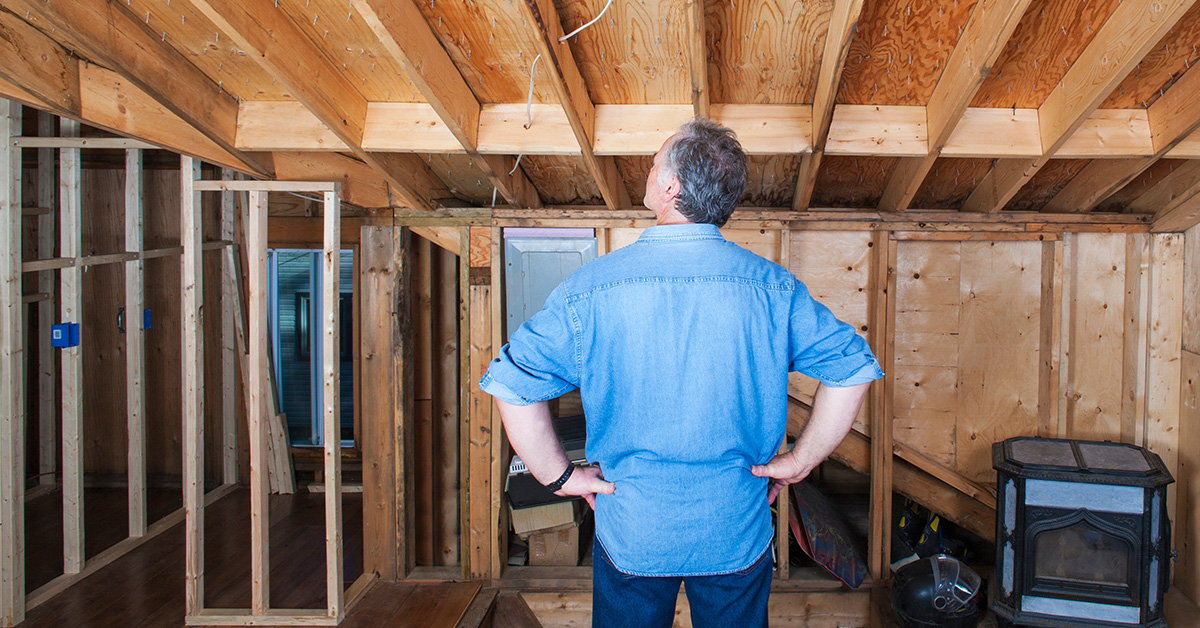
Pros and Cons of DIY Roof Inspections
| Advantages | Disadvantages |
|---|---|
| Save money by skipping inspection fees | Risk of injury from falls or accidents |
| Inspect at your own convenience, especially after storms | Limited expertise might lead to overlooked damage |
| Gain a better understanding of your roof’s condition | Lack of specialized tools may limit the thoroughness of your inspection |
DIY roof inspections give you the freedom to check your roof on your schedule, especially after severe weather. Plus, they help you become more familiar with your property. But the risks are real – working at heights is inherently dangerous, and without professional training, it’s easy to miss subtle signs of trouble. Additionally, while you can gather many of the tools needed, advanced equipment that detects hidden issues often isn’t readily available. This could leave underlying problems undetected, potentially causing bigger headaches down the line.
Up next, we’ll dive into professional roof inspections to see how they stack up against the DIY approach.
Professional Roof Inspections
Hiring a professional roofing contractor brings more than just peace of mind – it provides access to specialized skills, advanced tools, and thorough evaluations that go far beyond what a DIY inspection can achieve. For homeowners in Tulsa, professional inspections are a smart way to protect your home and preserve its long-term value.
What Happens During a Professional Roof Inspection
A professional roof inspection is a detailed process designed to uncover issues that a casual glance might miss. It starts with an exterior evaluation, where trained inspectors carefully examine every angle of your roof, paying attention to critical components like shingles, flashing, and gutters.
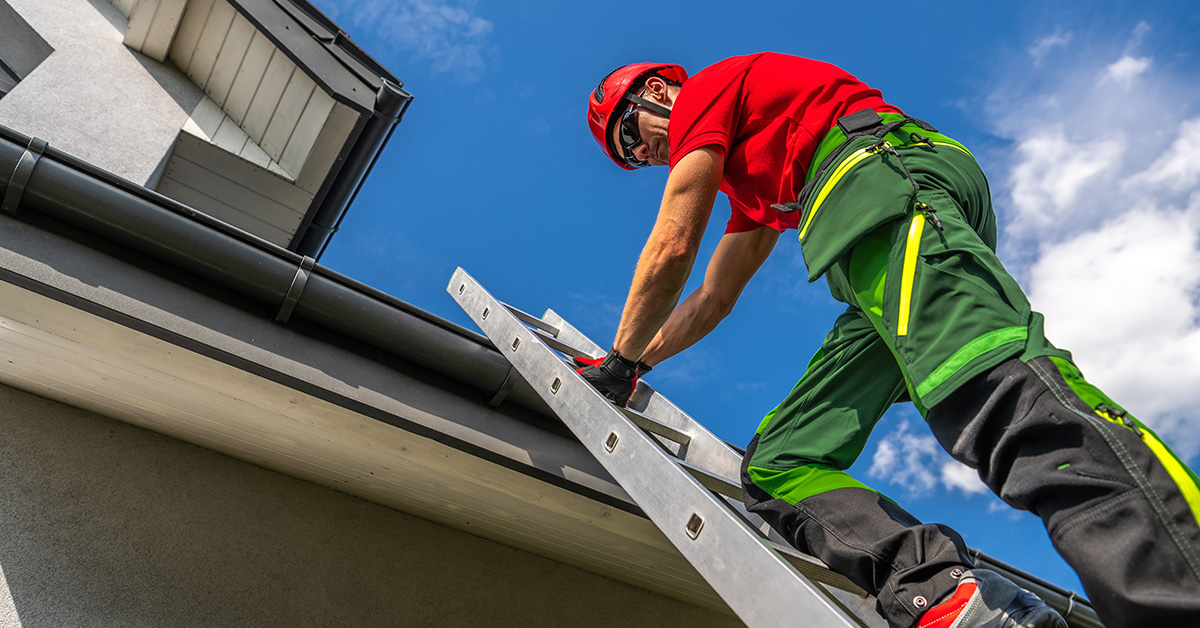
Using specialized tools like moisture meters, thermal imaging cameras, and sometimes even drones, these experts can detect hidden problems. For example, they might find moisture trapped beneath shingles or identify early structural weaknesses – issues that often go unnoticed without the right equipment.
The inspection doesn’t stop at the roof’s surface. Professionals also check attic spaces for signs of leaks, ventilation issues, or insulation problems. This comprehensive approach ensures no aspect of your roofing system is overlooked.
At the end of the inspection, you’ll receive a detailed report, complete with photos, measurements, and descriptions of any issues found. This documentation is invaluable for insurance claims, planning repairs, or simply understanding the condition of your roof. It’s a level of thoroughness that DIY methods simply can’t match.
Why Choose Professional Roof Inspections
Professional roof inspections bring a level of expertise that can’t be replicated by watching tutorials or using basic tools. Inspectors are trained to differentiate between minor wear and critical structural issues, and they know where to look for early warning signs based on how different roofing materials age.
Safety is another major advantage. Climbing onto a roof can be dangerous, especially without proper training or equipment. Professional roofers are equipped to work safely at heights and are insured to handle any risks.
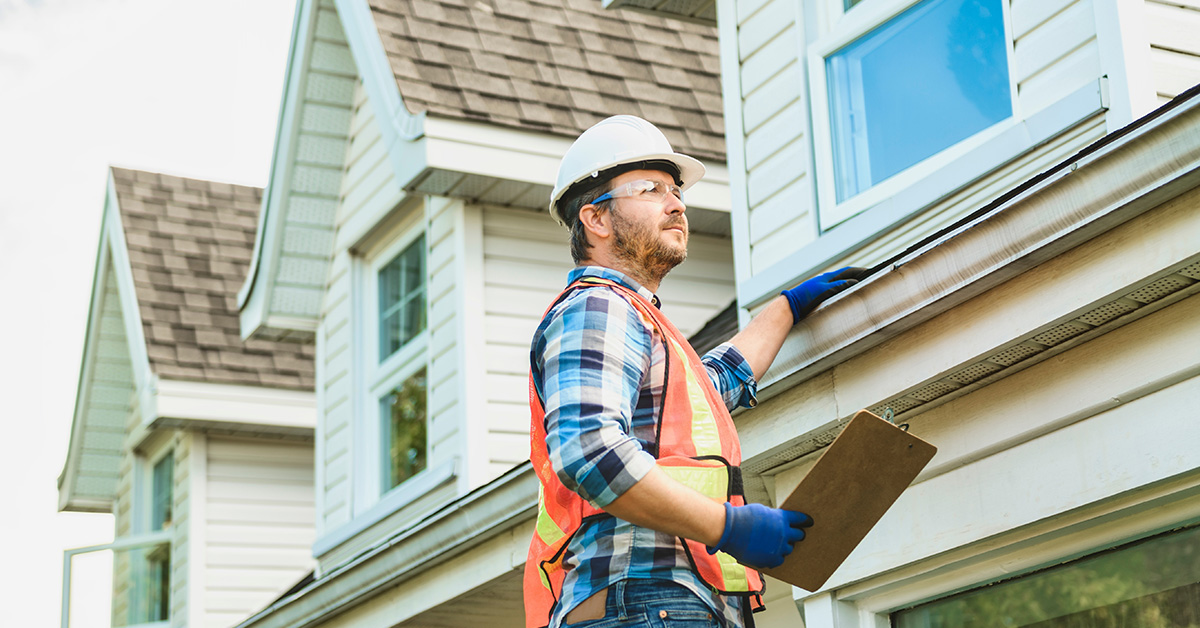
Additionally, professional inspections carry credibility. Whether you’re dealing with insurance claims, warranty coverage, or potential buyers during a home sale, a report from a trusted expert holds much more weight than a DIY assessment. This credibility can make processes like filing claims or negotiating repairs much smoother.
In the long run, professional inspections can save you money by catching small issues before they turn into costly repairs. For instance, identifying a minor leak early on could prevent extensive water damage later. The upfront cost of an inspection often pays for itself by helping you avoid expensive fixes down the road.
Professional Roof Inspection Costs
The cost of a professional roof inspection typically falls between $200 and $600 for most residential properties. Factors like roof size, pitch, the number of stories, and the type of roofing material can all influence the price.
That said, many homeowners can benefit from professional inspections without paying a dime upfront. For example, Pro-Tech Roofing offers free roof inspections to help Tulsa-area residents stay on top of their home maintenance. This service includes a full evaluation and a detailed report, giving you professional-grade insights at no cost.
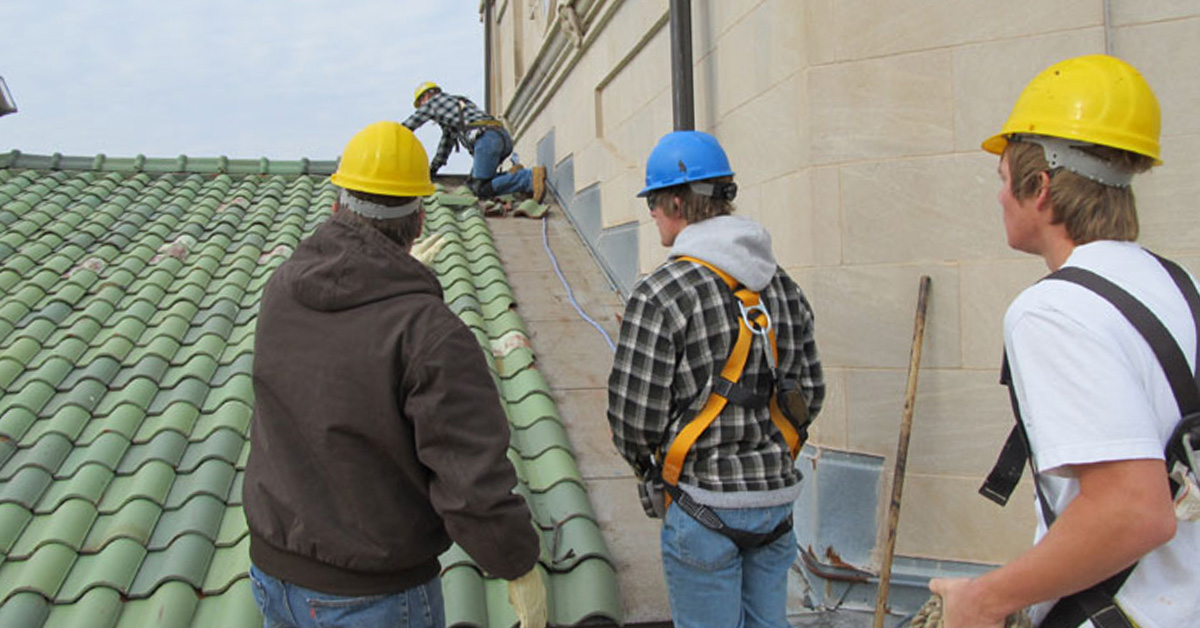
Professional inspections can also offer financial perks when it comes to insurance. Some insurers provide discounts for homes with recent professional inspections, and having detailed documentation can simplify the claims process after storm damage. In some cases, insurance companies may even require an inspection for older homes or after severe weather events, making it a necessary step.
Beyond just identifying current issues, professional inspections often include maintenance advice, estimates for your roof’s remaining lifespan, and recommendations for future repairs or replacements. This comprehensive approach helps you budget for upcoming expenses and avoid unexpected emergencies – delivering real value with every visit.
sbb-itb-66ccccd
DIY vs Professional Roof Inspections
When deciding between DIY and professional roof inspections, a side-by-side look at their differences can help you figure out the best approach for your needs.

Side-by-Side Comparison
Here’s how DIY and professional inspections stack up across key factors:
| Feature | DIY Roof Inspection | Professional Roof Inspection |
|---|---|---|
| Cost | Free (just your time) | $200–$600 on average |
| Safety | High risk of falls or injury | Trained professionals with proper safety gear |
| Accuracy | Focuses on visible issues | Detects hidden damage with expert training |
| Tools | Basic tools like binoculars | Advanced tools: thermal cameras, drones, moisture meters |
| Coverage | Limited to ground-level and attic views | Comprehensive assessment of roof surface, structure, and interior |
| Documentation | Simple notes or photos | Detailed reports with measurements and professional photos |
| Insurance Value | Not valid for claims | Accepted documentation for insurance and warranties |
| Time Investment | 1–2 hours of your time | Typically 2–3 hours, scheduled by the inspector |
Professional inspections often uncover hidden issues that DIY efforts might miss. DIY inspections, while helpful for spotting obvious problems, can overlook serious issues that could lead to costly repairs down the road.
Safety is another critical factor. Climbing onto a roof without proper training or equipment comes with significant risks.
In terms of thoroughness, professional inspections cover every detail, from shingles and flashing to insulation and ventilation. They provide a level of depth that a DIY inspection simply can’t match.

When to Choose Each Option
The right choice depends on your situation and comfort level.
DIY inspections are great for keeping tabs on your roof’s overall condition or handling straightforward tasks. For example, you can check your gutters for loose sections or rust, look for granules from asphalt shingles, or inspect your attic for signs of moisture, mold, or rot. Small fixes, like reattaching a loose shingle with roofing cement or sealing a minor drip, are also within the realm of DIY.
However, for anything beyond basic upkeep, professional inspections are the way to go. They’re especially important after extreme weather events like hailstorms or high winds, when buying or selling a home, or if you notice issues like active leaks, water stains, or sagging ceilings. Professionals are also equipped to handle complex problems, such as structural damage, widespread leaks, or issues with flashing, skylights, and chimneys.
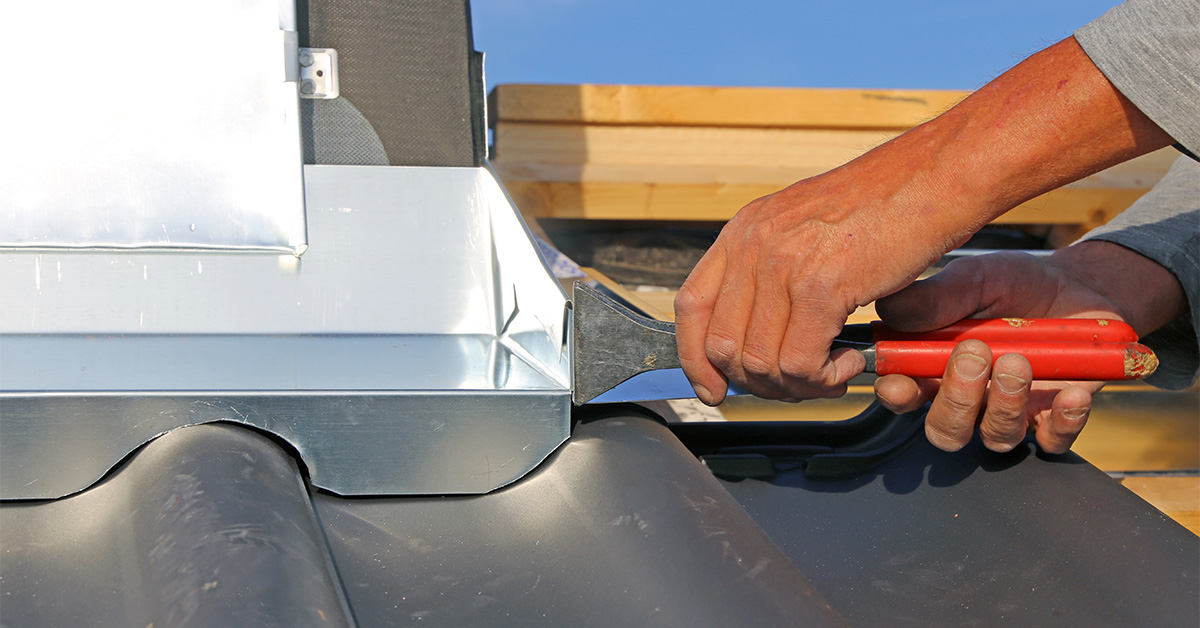
If your DIY inspection leaves you unsure about any findings, it’s a clear sign to call in an expert. The same applies if you spot recurring leaks or missing shingles over large areas.
For roofs older than 15 years, professional inspections are highly recommended to catch age-related wear and tear early. Their specialized tools and expertise go far beyond what you can achieve with a DIY approach.
Conclusion
Selecting the right roof inspection method depends on your specific needs, comfort level, and the condition of your roof. Both DIY and professional inspections play a key role in keeping your home in good shape.
DIY inspections are great for routine maintenance and spotting obvious issues. They help you stay informed about your home’s condition and are handy for basic upkeep. However, they come with limitations – hidden problems can go unnoticed, and climbing onto a roof always carries safety risks.
On the other hand, professional inspections offer a deeper dive. With advanced tools and expert knowledge, professionals can uncover issues that might escape the untrained eye. While this option comes with a cost, it can save you from expensive repairs down the line. If you notice signs of damage or feel unsure about your roof’s condition, calling in a professional is a smart move.
The best strategy may combine the two – regular DIY checks for ongoing monitoring and professional evaluations when serious concerns arise or when you’re not comfortable inspecting the roof yourself. Below are the key takeaways to help you decide.
Key Points to Remember
- Your roof’s health matters. Choose the right inspection method to protect your home and investment.
- DIY inspections are ideal for routine checks and minor upkeep but may miss hidden problems.
- Professional inspections provide a thorough evaluation, especially when issues aren’t immediately visible.
- Safety first. If you’re unsure about handling an inspection, it’s always better to call in an expert.
For expert advice and detailed inspections, reach out to Pro-Tech Roofing. They’re here to help keep your roof – and your home – secure.
FAQs
What safety risks should I consider before doing a DIY roof inspection, and how can I stay safe?
Performing a roof inspection on your own can be risky. The main dangers include falls from ladders or the roof, slippery surfaces, and using unstable equipment. Without the right precautions, these risks can lead to severe injuries.
To prioritize safety, make sure to use a sturdy ladder equipped with stabilizers, wear shoes with non-slip soles, and, if possible, use a safety harness that’s securely anchored. Also, steer clear of inspecting your roof during wet, icy, or windy weather – these conditions significantly increase the chance of slipping. Following these measures can help minimize the risks involved in DIY roof inspections.
Why are professional roof inspections important for insurance claims, and why do insurers often require them?
Professional roof inspections play a key role in the insurance claims process by offering a thorough, impartial evaluation of your roof’s condition. This detailed report helps verify the extent of the damage, pinpoint its cause, and provide an accurate estimate for repairs – ensuring your claim is both precise and well-documented.
In fact, many insurance companies rely on these inspections to confirm damage before approving coverage or payouts. Beyond streamlining the claims process, a professional inspection can uncover hidden problems that might otherwise go unnoticed, helping to safeguard your property and investment over time.
Can combining DIY and professional roof inspections help homeowners maintain their roof more effectively?
Combining DIY roof inspections with professional evaluations is a smart way to keep your roof in top shape. DIY checks allow homeowners to identify obvious issues, such as missing shingles, debris buildup, or visible damage. On the other hand, professional inspections delve deeper, uncovering hidden or more complex problems that require specialized expertise.
By regularly conducting DIY inspections, you can catch minor issues early and address them before they escalate. Pairing this with periodic professional assessments ensures a comprehensive understanding of your roof’s condition, helping to prolong its lifespan and prevent expensive repairs in the future.
